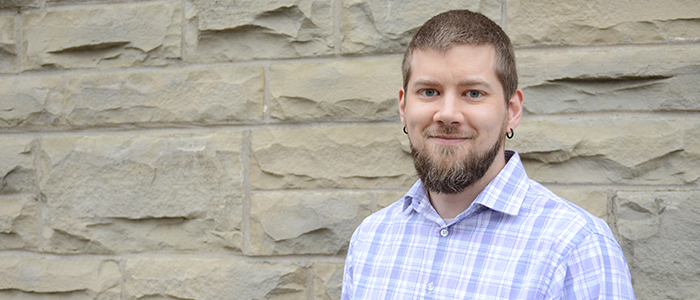The future of medicine, hiding in plain sight

Dan Lizotte, PhD, believes many of the answers to Canada’s biggest health questions could potentially be hiding in plain sight — in the shadows of large medical data sets, such as patient records.
An assistant professor with a cross-appointment in the Departments of Epidemiology and Biostatistics and Computer Science, Lizotte’s background has given him a unique perspective on the future of medicine in Canada. He is using his skill set in data analysis and statistics to help improve the lives of patients and physicians in Canada.
“I think that there are many data sources that, if carefully used, could provide a lot of really important evidence and help with good decision making, from the clinic to policy,” Lizotte explained. “I would say some of those data sources are just a little bit non-traditional, but in the field of computer science we’ve been a little more adventurous with the work we’ve been going after.”
One of the projects he recently started focuses on providing a better understanding of multimorbidity — the occurrence of more than one chronic disease, like diabetes and cardiovascular disease, in one person at the same time. The burden of multimorbidity on Canadians is increasing, yet patient health care is usually focused on one disease at a time, which may not be the best approach.
To help find better solutions, Lizotte and a team of researchers are drawing on a big data set of approximately one million patient records from across Canada. Using tools that already exist that help predict the risk of developing different chronic diseases, they have been able to look at clusters of diseases at the same time.
“What we want to do is identify the risk factors that are going to have the biggest impact on someone’s overall health,” Lizotte said. “If we can predict the diseases that a patient is most at risk for, we can look at the modifiable risk factors for those diseases, such as smoking or poor diet, and identify a few that need to be addressed.”
The ultimate goal of this project would be to produce a tool used by the patient and physician during a medical appointment, so together they could determine what the patient risk profile looks like and help them identify behaviours they could change.
“Hopefully the discussion would lead to better health care outcomes down the road,” he said. “We are also thinking of this in part as a way to help people prioritize those behavioural changes, giving them the most ‘bang for their buck’, since people have a finite amount of energy they can spend on making these changes.”
Since joining the teams at Western, Lizotte has had the opportunity to collaborate with several people from a variety of faculties and departments, and even has the opportunity to supervise graduate trainees in both of the Departments of Epidemiology and Biostatistics and Computer Science.
Even though computer science is relatively a young discipline, it is quite broad. Coming from a background in artificial intelligence and machine learning, Lizotte could have chosen to work more exclusively in that area, but decided he wanted to take part in projects that were more translational.
“I have always been interested in method development with an application component, and my favourite application components have to do with health care,” he said. “In the future, I want to be able to build tools that are going to make a difference on the physician and patient experience.”








